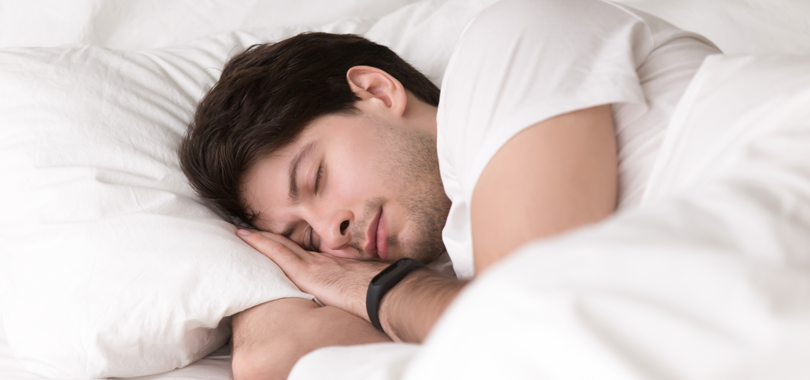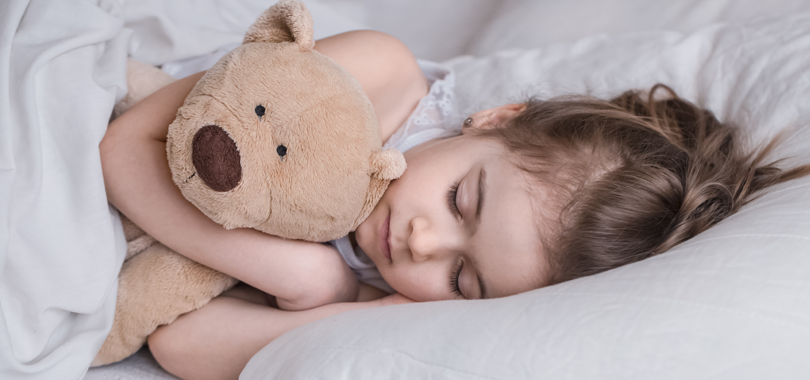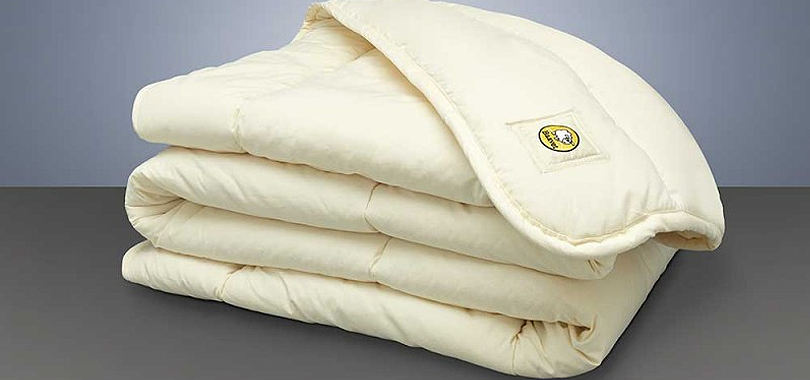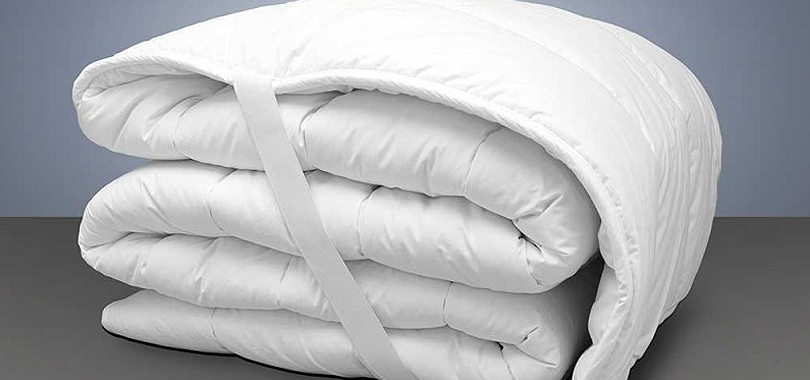
The Best Temperature for Sleep
Key Points

The ideal sleep temperature is 60–68°F (15.6–20°C)—a cooler environment helps you fall asleep faster and stay asleep longer.

Your body naturally cools down before sleep, following its circadian rhythm. Keeping your room at an optimal temperature supports this process.

Babies and older adults may have different needs—infants require slightly warmer conditions, while research suggests older adults sleep best between 68–77°F (20–25°C).

Wool bedding is an effective sleep solution, regulating temperature, wicking moisture, and providing breathability for year-round comfort.
Achieving high-quality sleep is essential for overall health and well-being, impacting everything from cognitive function to immune system strength. One often-overlooked factor in sleep quality is temperature—both our body's internal temperature and the external temperature of our sleep environment.
In this article, we’ll explore what the ideal temperature for sleep really is - backed by science - and why it matters so much for your body’s natural sleep processes. We’ll also look at how that ideal temperature may vary for babies and older adults, what happens when your environment is too warm or too cold, and what you can do to keep your sleeping space just right.

What Is the Ideal Temperature for Sleep?
According to the Sleep Foundation, the ideal bedroom temperature for sleep is around 65°F (18.3°C), with 60 to 68°F (15.6 to 20°C) often cited as a commonly recommended range. Sleeping in a cool environment helps facilitate the body’s natural sleep processes, making it easier to fall asleep and stay asleep.
But why is this the case? One study published in the National Library of Medicine found that exposure to temperatures outside the thermoneutral zone can lead to increased wakefulness as well as reduced rapid eye movement (REM) and slow-wave sleep, both of which are essential for physical recovery and cognitive processing. If your bedroom is too warm, it can disrupt these critical sleep stages, leading to fragmented, lower-quality sleep.
While individual preferences vary, most people benefit from a cool, well-ventilated room paired with bedding that helps regulate body temperature—like wool, which naturally adapts to your body’s needs throughout the night.

How Body Temperature Changes During Sleep
Your body's core temperature naturally fluctuates throughout the sleep cycle, influenced by your circadian rhythm. This internal body clock, controlled by the suprachiasmatic nucleus in the hypothalamus, helps regulate the sleep-wake cycle and body temperature in response to environmental cues like light exposure.
The Role of Core Body Temperature in Sleep
Your core body temperature generally hovers around 98.6°F (37°C) but fluctuates by about 2°F (1°C) over a 24-hour period. About two hours before bedtime, body temperature starts to drop, coinciding with the release of melatonin, the sleep hormone. During sleep, temperature continues to decline, reaching its lowest point in the early morning before gradually warming up as you wake up.
Lowering the thermostat at night aligns with these natural temperature fluctuations, reinforcing your body’s signal that bedtime is approaching and supporting more restful, uninterrupted sleep.
How the Body Regulates Temperature During Sleep
The principal way your body cools itself for sleep is through vasodilation, a process where blood vessels in the hands and feet expand to release heat from the core. This is why some people experience warm hands and feet at night, even though their core temperature is dropping. Studies suggest that individuals with chronically cold feet may be at higher risk for sleep-onset insomnia, possibly due to a disruption in this heat-loss process.
Temperature and Sleep Stages
Different sleep stages are associated with specific temperature changes:
Deep sleep (slow-wave sleep): Body temperature is at its lowest, and heat dissipation slows down to conserve energy.
REM sleep: The body loses some of its ability to regulate temperature, making it more sensitive to the ambient environment.
Sleeping in a thermoneutral environment, where your body doesn’t need to work to warm up or cool down, helps ensure uninterrupted sleep through these cycles.

Does the Ideal Sleep Temperature Differ by Age?
For Babies:
In the first weeks of life, babies have an underdeveloped ability to regulate their body temperature, making them more vulnerable to cold environments. This is why a slightly warmer room is often recommended to keep them comfortable. The ideal room temperature for babies is between 16°C and 20°C. However, research suggests that by 11 weeks of age, babies begin to reach a minimum core body temperature of 97.5°F (36.4°C) within four hours of bedtime, similar to adults (PubMed: 25245173). This indicates that as they grow, they may not require warmer temperatures at bedtime, and a cooler environment can be more beneficial for sleep quality.
A bedroom that is too warm can cause overheating, which increases the risk of Sudden Infant Death Syndrome (SIDS), so it’s important to use breathable bedding like wool. Instead of thick blankets, layering with natural fibre sleep sacks is a safer option to prevent overheating.
For Older People:
Older adults often feel colder at night due to changes in circulation and metabolism. A study published in Science of the Total Environment tracked 11,000 nights of sleep from 50 adults aged 65 and older and found that sleep quality was best between 68–77°F (20–25°C), with sleep efficiency declining above 77°F (25°C).
These findings indicate that older adults may benefit from slightly warmer bedroom temperatures than younger adults, though comfort preferences vary. Using layered bedding, such as a wool blanket over your duvet, allows for flexibility in adjusting warmth while maintaining breathability.

Why Temperature Matters for Sleep
Impact of Being Too Hot
When your environment is too hot, your body struggles to release heat, disrupting its natural cooling process and leading to:
-
Increased wakefulness – Higher ambient temperatures result in more time spent awake during the night.
-
Reduced slow-wave sleep (deep sleep) – Overheating disrupts deep sleep, which is essential for physical recovery.
-
Decreased REM sleep – Elevated temperatures reduce REM sleep, the stage critical for cognitive function, emotional regulation, and memory consolidation.
-
Higher sleep fragmentation – Warm environments, especially with high humidity, cause frequent awakenings and lighter sleep.
Impact of Being Too Cold
Cold exposure can influence sleep, though its effects depend on factors like bedding and clothing. A study published in The National Library of Medicine (Okamoto-Mizuno & Mizuno, 2012) found that when adequate bedding is used, cold exposure does not significantly alter sleep stages or subjective sleep quality. However, it does impact cardiac autonomic responses, meaning the body works harder to maintain core temperature, even if sleep itself appears undisturbed.
While a cold room may not directly cause frequent awakenings, prolonged exposure can lead to increased physiological stress. Ensuring a comfortable sleep setup, such as layered, insulating bedding like wool, can help minimise unnecessary thermal regulation effort and maintain sleep quality.

How to Achieve the Ideal Sleeping Temperature
Choose Wool Bedding
Wool bedding is one of the most effective ways to regulate body temperature and maintain sleep comfort throughout the night. Unlike other popular choices such as down duvets and synthetic materials, wool naturally adapts to temperature changes, keeping you warm in cold conditions and cool when temperatures rise.
Wool’s moisture-wicking properties help prevent night sweats by absorbing excess moisture and releasing it into the air, keeping you dry and comfortable. Additionally, wool is highly breathable, allowing for steady airflow and reducing the risk of overheating.
Wool is also naturally hypoallergenic and resistant to dust mites, making it an excellent choice for those with allergies or sensitivities.
Adjust Room Settings
Creating a sleep-friendly environment starts with controlling bedroom temperature. Use a programmable thermostat to maintain an optimal range of 60–68°F (15.6–20°C). Ensure proper ventilation by opening windows or using a fan. If your room tends to overheat, blackout curtains can block excess heat from sunlight, while humidifiers or dehumidifiers can help balance moisture levels, preventing discomfort from overly dry or humid air.
The Warm Bath Effect
Taking a warm bath about 90 minutes before bed can aid in falling asleep faster. This process, known as the warm bath effect, works by temporarily raising body temperature. When you exit the bath, your core temperature naturally drops, mimicking the body’s circadian cooling process, which signals that it’s time to sleep.
Exercise Timing
Studies have shown that exercising up to two hours before bed can reduce the time it takes to fall asleep and increase deep sleep duration. When you exercise, your body temperature rises, and as it cools post-exercise, it mimics the body's natural cooling process before sleep—similar to the effect of a warm bath.
Exercise also promotes stress reduction and anxiety relief, further supporting better sleep quality. However, it’s best to avoid intense workouts less than two hours before bedtime, as this can keep body temperature elevated and disrupt sleep onset.
Food & Hydration
If you consume heavy, high-protein, or spicy foods late in the evening, your body temperature may remain elevated, making it harder to fall asleep. Alcohol and caffeine can also increase body temperature and disrupt sleep cycles, further impacting sleep quality.
For better sleep, opt for lighter, easily digestible meals in the evening and stay hydrated throughout the day to support natural thermoregulation.

Sleep Better with Baavet Wool Bedding
Achieving the right sleep temperature is key to high-quality rest. By maintaining an optimal room temperature, making simple lifestyle adjustments, and choosing temperature-regulating bedding, you can create an environment that supports deep and restorative sleep.
For a natural, year-round solution, explore our wool bedding range at Baavet.co.uk, where you’ll find high-quality wool duvets, pillows, and mattress toppers designed to help you sleep comfortably every night.

